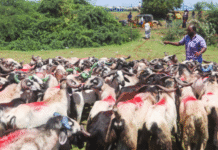New Delhi–The inter-state migration in India is two to three times higher than previous estimates with around five to nine million people migrating annually, according to the Economic Survey 2016-17.
The report, tabled in Parliament by Finance Minister Arun Jaitley on Tuesday, added that the acceleration of migration in the 2000s was particularly pronounced for females and increased at nearly twice the rate of male migration.
It also said that language doesn’t seem to be a significant barrier in the migration of people according to “preliminary evidence”.
Citing two different surveys — the Cohort based Migration Metric (CMM) and first-ever estimate using railways data — the report said that estimates using both are significantly higher than any previous study including the annual average number of about 3.3 million suggested by successive Censuses.
CMM considers net migration to be the percentage change in population between the 10-19 year age group in an initial census period and the 20-29 year age group in the same area a decade later, after correcting for mortality effects.
While CMM estimates the annual inter-state labour mobility between 2001-11 to be five-six million people, the first ever estimate of work-related migration using railway data for 2011-2016 indicates an annual average flow of close to nine million people, the report said.
“The numbers show that internal migration has been rising over time, nearly doubling
in the 2000s relative to the 1990s.
“One plausible hypothesis for this acceleration is that the rewards (in the form of prospective income and employment opportunities) have become greater than the costs and risks that migration entails,” the report said.
It also pointed out that less affluent states and districts witness higher out-migration, and rich metropolises attract large inward flows of labour.
“Over time, there has been a shift towards the southern states, reflecting the opening up of new migration corridors in recent years,” it added.






